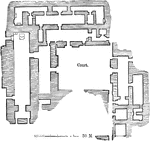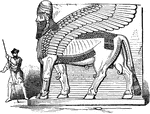Clipart tagged: ‘nimrod’

Floor Plan of the Palace at Nimrud
One peculiarity is visible in all Assyrian buildings, namely, that all the chambers are very narrow…

Winged Bull from Nimrud
The Sumerian word lama, which is rendered in Akkadian as lamassu, refers to a beneficient protective…